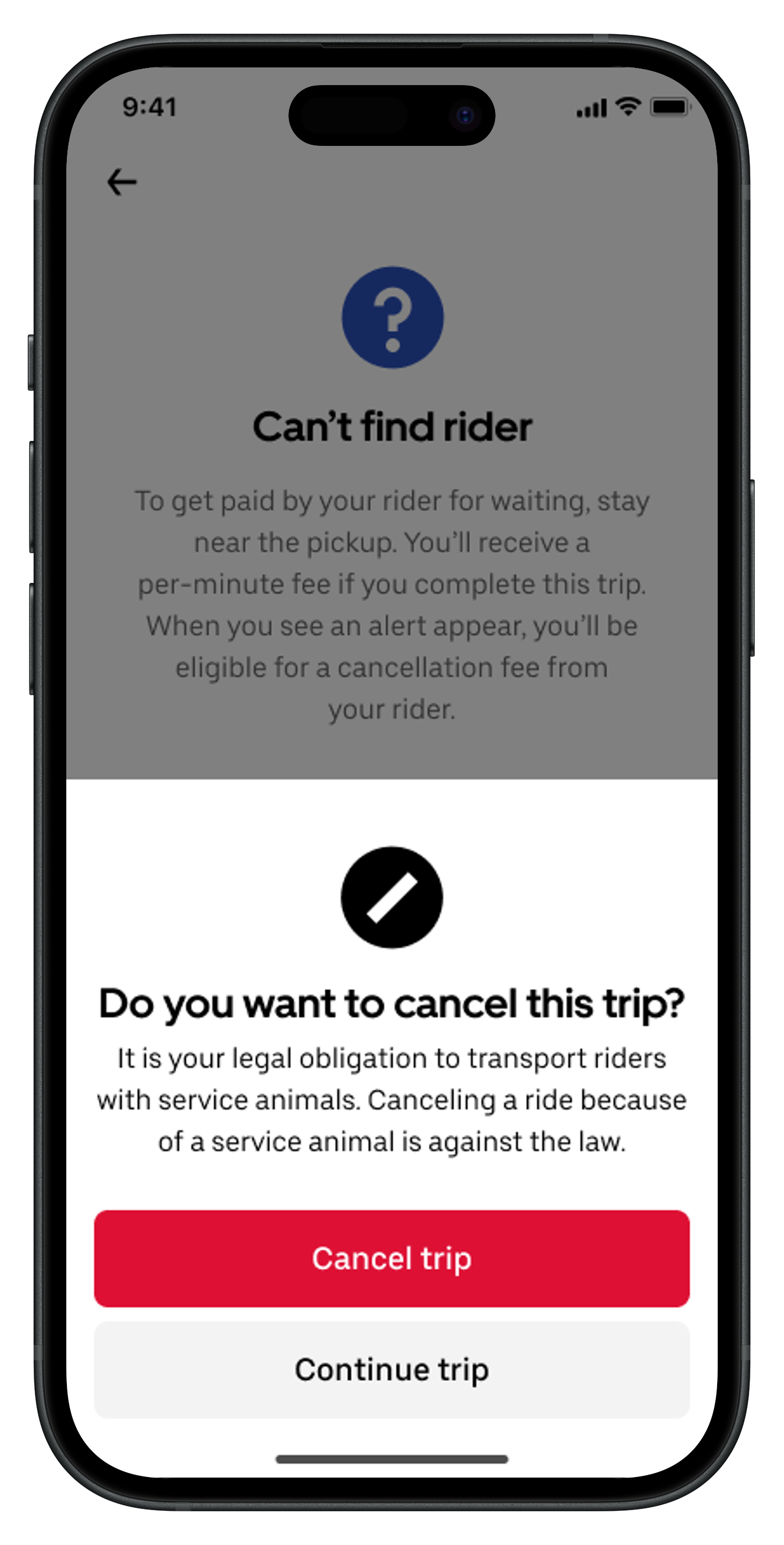Self-identification option for riders with service animals
Written byService animals play an important role in providing independence, safety, and companionship in the daily lives of thousands of Canadians with disabilities. Uber provides increased access to transportation for riders with service animals, but we know there is more work to do. As part of our ongoing efforts to implement more inclusive ways to ride with Uber, we are launching optional self-identification within the Uber app for riders with service animals across the country.
We’ve heard from riders that they often message drivers in advance to inform them they’re travelling with a service animal. With this new feature, riders now have the option to self-identify as a rider with a service animal in the Uber app and choose to automatically notify drivers of this information when the driver arrives at the pickup location.


We worked diligently to design, build, and test this feature in consultation with experts and members of the service animal community, and we’re thrilled to finally share it with riders across the country. With this update, our goal is to foster clearer communication and greater confidence for both riders and drivers throughout their journey consistent with human rights laws.
Riders with service animals can follow these simple steps to use the feature:
-
- Tap Account > Settings
- Tap Accessibility and select: Service Animal
- Tap Complete eligibility form
- Complete the eligibility form
- Select I will ride with my service animal
- Choose whether you want drivers to be notified of this information
Once a rider opts into notifying drivers that they’re travelling with a service animal, the trip cancellation process for drivers will adapt accordingly. If a driver requests to cancel the trip at pickup, they will receive an in-app notification reminding them it is against the law to refuse to transport someone because of their service animal.

We understand how stressful and jarring experiencing a ride refusal can be. If a self-identified rider with a service animal experiences a driver cancellation at pickup, we will proactively send an in-app message to the rider asking what happened so we can provide additional support.
In September 2024, we introduced a mandatory information module on transporting riders with service animals for drivers on the Uber platform. All current drivers have completed the module and any new driver has 100 days to complete the module after their 21st trip.
“At CNIB, we’re committed to ensuring the rights of guide dog handlers are respected and upheld throughout Canada. Through our continued advocacy, we’ve collaborated with Uber on a number of different initiatives to inform drivers and raise awareness that transporting guide dog teams is the law,” said Angela Bonfanti, President and CEO of CNIB. “We must put an end to the discrimination against people who depend on guide dogs for mobility, safety and increased independence. We hope Uber’s new voluntary feature for riders will help deter drivers from denying access to guide dog handlers. But there is more work to be done.”
We believe in equal transportation for all Canadians, and that includes riders with service animals. While this new self-identification feature is a welcomed step in helping to address the persistent issue of ride refusals for riders with service animals, use of this feature is entirely voluntary for riders. However, denying a ride to a rider with a service animal is still against the law – regardless of if the rider has self-identified or not.
Uber’s Service Animal Policy is clear: it is against our Community Guidelines and the law to refuse service to riders with service animals or discriminate against them in any way due to their service animal. We do not tolerate discrimination on the Uber platform. It’s our policy to deactivate accounts of drivers who knowingly discriminate against riders with service animals.
We are incredibly thankful to our partner, CNIB, for their valuable input and ongoing advocacy. With these updates, we’re proud to take another step forward in making transportation more accessible for riders with service animals across Canada.